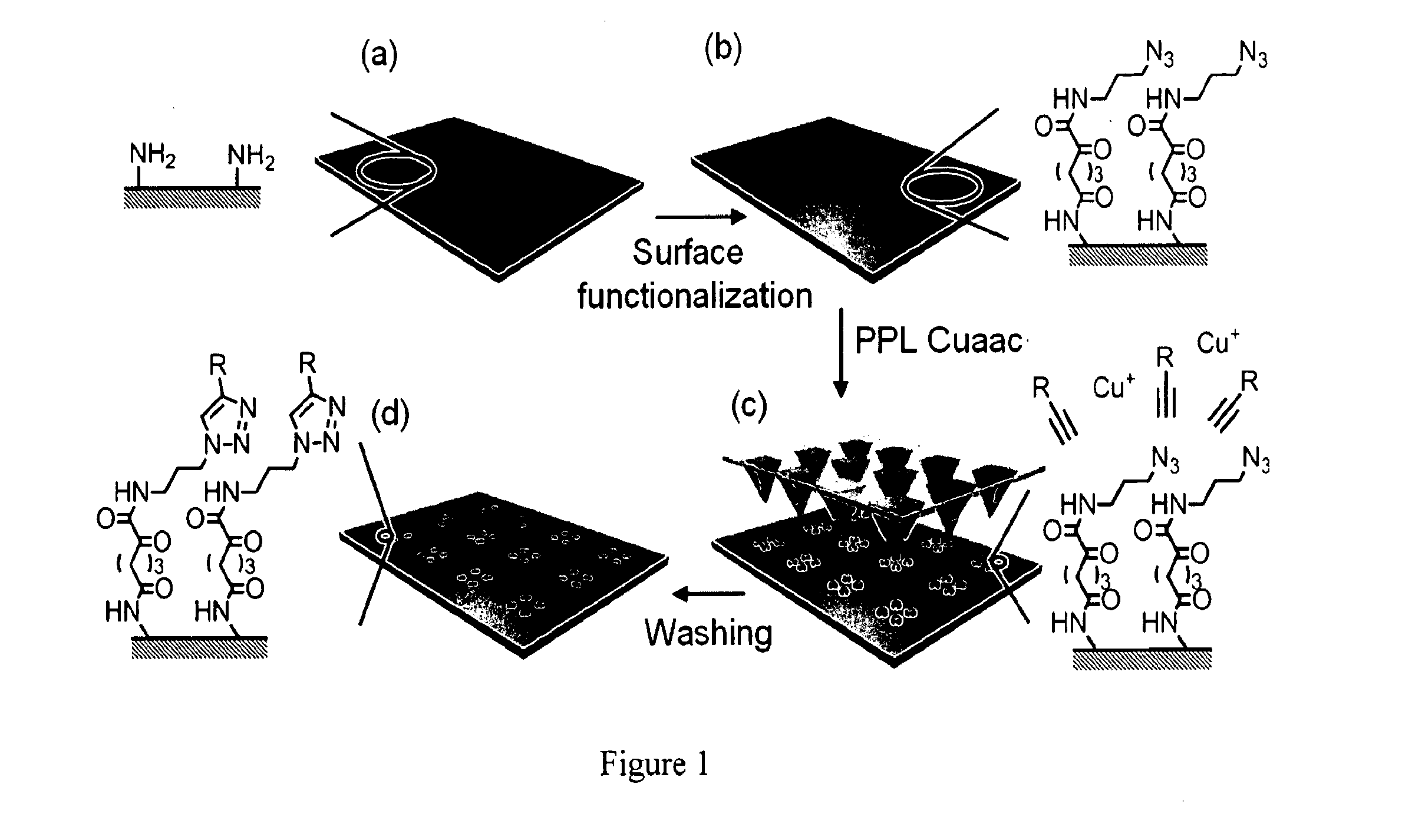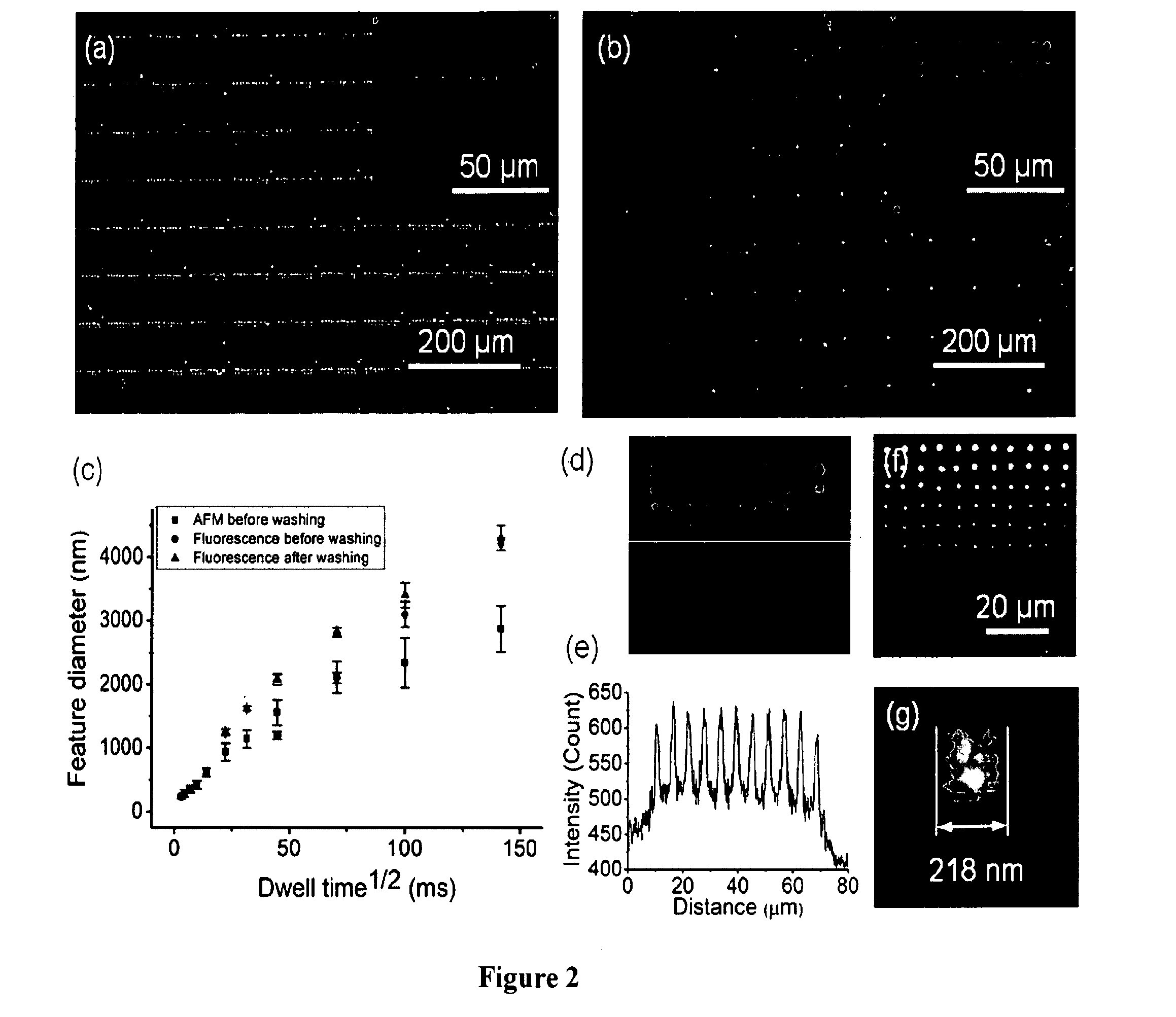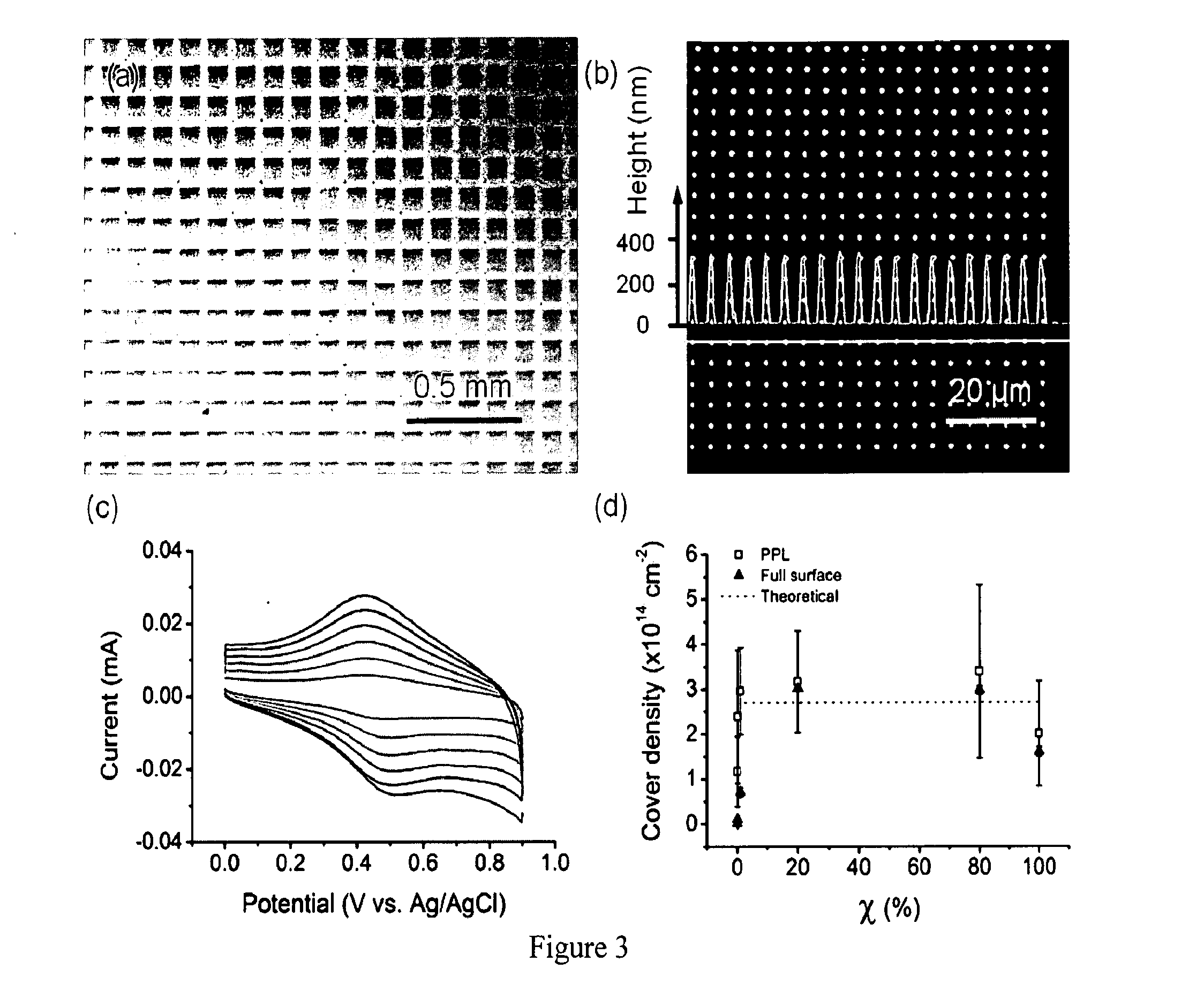Nanoreactor printing
- Summary
- Abstract
- Description
- Claims
- Application Information
AI Technical Summary
Benefits of technology
Problems solved by technology
Method used
Image
Examples
example 1
Use of CuI-catalyzed Azide-alkene Cycloaddition in Preparation of Nanoarrays
[0055]It should be appreciated that while the covalent immobilization of fluorescent, redox-, and biologically-active alkyne-containing inks onto azide terminated surfaces by the PPL-induced site-specific CuI-catalyzed azide-alkyne cycloaddition (Cuaac) is discussed and an example of the describe apparatus, processes, and compositions, other soft matter or reactions may be used without departing from the spirit and scope of the invention. The Cuaac is a bioorthogonal reaction, proceeds quickly and in high yield, and has been adopted widely by researchers for applications in chemical biology, materials science, and nanotechnology. Additionally, this reaction involves four reagents that must all come together in the appropriate orientation and reactive form for the Cuaac to proceed, and inducing multicomponent reactions with molecular printing strategies has been a major challenge. For example, DPN or other AF...
example 2
Immobilization of Carbohydrates and Other Soft Molecules onto Azido-Functionalized Glass and Gold Surfaces via Cuaac
[0065]To demonstrate that the patterns produced by combining PPL with the Cuaac reaction can be used to detect sugar-lectin binding, arrays of alkyne functionalized α-D-mannose (3) were prepared according to FIG. 9a. α-D-Mannose is a monosaccharide that is over expressed on the surface of certain cancer cells and the AIDS virus, and the ability to measure the interaction between α-D-mannose and proteins in microarrays could reveal some of the biological foundations of the progressions of these diseases. Detecting binding to 3 was used as a proof-of-concept to demonstrate the utility of this patterning technique. 3 was prepared in two steps following previously reported literature protocols. To print the glycan arrays, 3 (100 mM), PEG (5 mg / mL), CuSO4, and sodium ascorbate were spin coated onto an 8000 pen PPL array and printed at 80% humidity with a dwell time of 20 s....
example 3
MA-PPL Induced Staudinger Ligation Facilitates Creation of Nanoarrays of Biologically Active Probes
[0066]In addition to the Cuaac-based reaction employed as described above in Examples 1 and 2, fluorescent and redox active probes may also be covalently patterned onto azido-terminated surfaces using a PPL-induced Staudinger Ligation. Both the patterning and characterization methods used herein can be generalized to easily confirm and quantify the success of many other organic reactions on surfaces. For example, the success of the present methods as described herein substantiates that soft matter comprising a biological probe, such as a sugar, an oligonucleotide, a peptide, or an antibody, may be patterned onto azido-terminated surfaces at nanoscale dimensions.
[0067]The combination of organic reactions with MA-PPL is a five-step process involving: (1) the preparation of a reactive surface; (2) the synthesis of fluorescent and redox active molecules that react with the surface; (3) pat...
PUM
 Login to View More
Login to View More Abstract
Description
Claims
Application Information
 Login to View More
Login to View More - R&D
- Intellectual Property
- Life Sciences
- Materials
- Tech Scout
- Unparalleled Data Quality
- Higher Quality Content
- 60% Fewer Hallucinations
Browse by: Latest US Patents, China's latest patents, Technical Efficacy Thesaurus, Application Domain, Technology Topic, Popular Technical Reports.
© 2025 PatSnap. All rights reserved.Legal|Privacy policy|Modern Slavery Act Transparency Statement|Sitemap|About US| Contact US: help@patsnap.com



